Ah, Athens! Must-see sites: Acropolis and Acropolis Museum
Last updated on June 26th, 2017 at 01:21 pm
Ah, Athens!
Thinking of booking a cruise of the Greek Isles that leaves from Athens? If so, you should plan to arrive a day before the ship departs from Piraeus port for a couple of reasons. Most importantly, you don’t want to miss the ship, due to unforeseen circumstances, like a flight delay or cancellation. And you don’t want to miss experiencing the high points of this amazing ancient city.
Our flight arrived mid-morning, in time to get settled into our hotel, the St. George Lycabettus, and have a free afternoon to explore the most famous site in all of Athens, the Acropolis. It is, quite literally, the “high point” of Athens, since the word acropolis comes from the Greek words (akron, “highest point, extremity”) and (polis, “city”).
The concierge we spoke with before leaving the hotel recommended we first visit the Acropolis Museum, which was opened on June 20, 2009, after three decades of planning and construction.
The new Acropolis Museum has a total area of over six acres (250,000 sq. ft.), with exhibition space of more than 4 1/2 acres (150,000 sq. ft.) — ten times larger than that of a former museum that was located on the Hill of the Acropolis.
If you arrive hungry, as we did, there is a lovely rooftop garden, where you can order a light meal and drink in the views of the Acropolis, which is within a few minutes walking distance from the Museum.
Admission is a very reasonable 5 Euros per person.
Every artifact found on the rock and on the surrounding slopes, from the Greek Bronze Age to Roman and Byzantine Greece, is housed within the museum.
The first level includes everything found on the slopes of the Acropolis. On the same floor there are also artifacts and sculptures from the other Acropolis buildings, including the Erechtheion, the Temple of Athena Nike, the Propylaea, and findings from Roman and early Christian Athens.
Pictured above and below are five of the six original caryatids, sculpted female figures which took the place of columns. They are known as the Porch of the Maidens. The sixth figure is on display in the British Museum. Exact replicas are now in place on the Erechtheion, located on the Acropolis.
SLIDESHOW: Acropolis Museum
The museum is also built over an extensive archaeological site. Areas both outside and inside the museum have a transparent floor, allowing visitors to see the excavations below.
If you visit on International Museum Day, held on or around May 18, the museum remains open until late with free entry and many events and activities. During August full moon nights, the museum also remains open until late at night and welcomes visitors for free, with concerts taking place on the museum’s courtyard.
As we left the Museum, we walked up the ancient road up to the area where tickets are purchased, passing by the wall in front of the Theater of Dionysus, which you will be able to look down on as you make your way up to the Acropolis.
Admission price to the Acropolis is 20 Euros (April through October); reduced 50% to 10 Euros from November through March. If we were going to be in Athens longer, we could have saved by purchasing a multi-site ticket for 30 Euros, providing access to six other archaeological sites, including the Ancient Agora, Hadrian’s Library and the Roman Agora. It is good for five consecutive days.
You may qualify for a 50% reduction/free admission (with valid ID/passport/student ID) if you are:
► over 65, and Greek or EU citizen
► under 18
► a teacher accompanying a school group
► accompanying a blind or disabled person
► a student of a university or higher education institute
We visited in early June, missing the extreme heat that can make the climb up to the Acropolis fairly strenuous, but we still made sure we bought a bottle of water at the concession before beginning the climb. No matter what the temperature, you’ll need it! Also, if it is rainy, watch your step. The marble steps can be slippery!
SLIDESHOW: Acropolis
While we didn’t take a guided tour, I’d recommend it if you have time. We could have benefited from learning more about what we were seeing, instead of researching it after the fact. During summer months, the sites are open daily from 8:00 am until 8:00 p.m.
As I read later about the history of the Acropolis, I found it fascinating that the classical buildings on the Acropolis were intact until the 17th century. It was Pericles who coordinated the construction of the site’s most important buildings, including the Parthenon, the Propylaia, the Erechtheion and the Temple of Athena Nike in the fifth century B.C.
The Parthenon and the other buildings were seriously damaged during a siege in 1687 siege by the Venetians in the Morean War. At that time, the Parthenon, which was being used to store gunpowder storage, was hit by artillery fire and severely damaged.
During various periods of history, the buildings atop the Acropolis served a wide range of purposes. The Parthenon, for example, was used as church dedicated to the Virgin Mary in the Byzantine period (330-1453 AD), followed by it being used as the garrison headquarters of the Turkish army after the Ottoman Conquest of Greece, and later was transformed into a mosque, complete with minaret.
Following the Greek War of Independence, which culminated in the country being recognized as an independent nation in 1832, an attempt was made to restore it to its original form.
Another building still standing on the Acropolis is the Erechtheion, dedicated to both Athena and Poseidon, with its Porch of the Maidens, six female figures, on the south side. As mentioned above, five of the originals are in the Acropolis Museum. The sixth is now in the British Museum in London. The ones you will see on the Acropolis are exact replicas.
The Acropolis is a UNESCO World Heritage Site, one of 18 in Greece. According to UNESCO, “The Acropolis of Athens and its monuments are universal symbols of the classical spirit and civilization and form the greatest architectural and artistic complex bequeathed by Greek Antiquity to the world.”
Also on the blog: Serendipity in Santorini: A day to remember
Thinking of a Greek Isles cruise? See Windstar – Greek Isles: Why take a Windstar Greek Isles cruise?


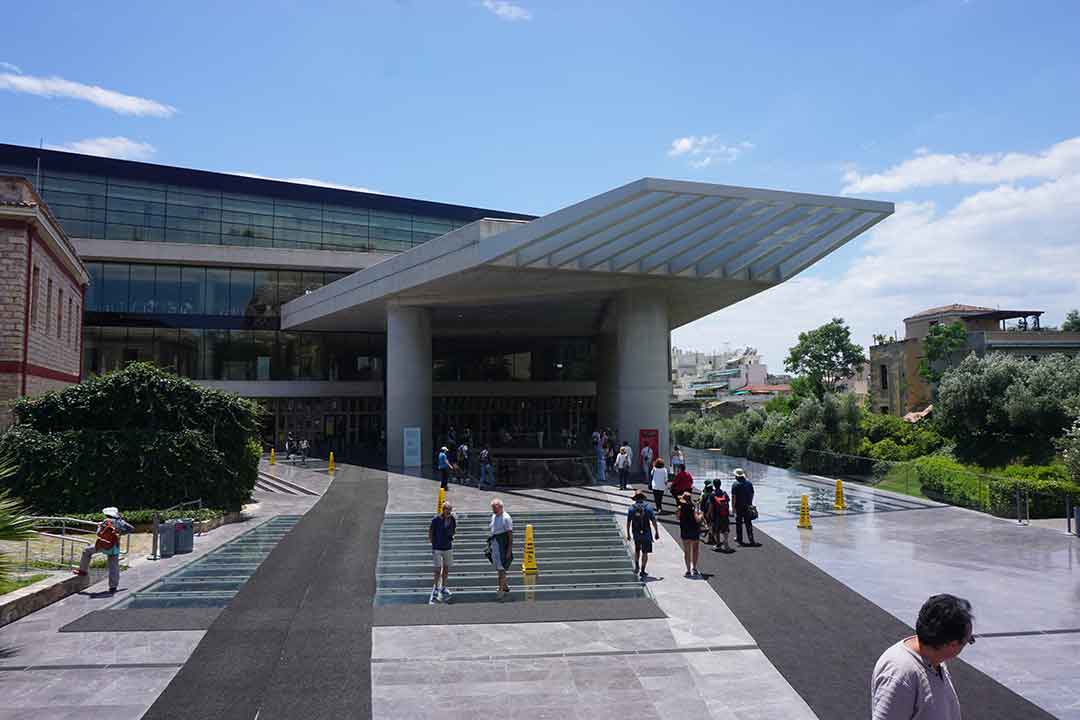
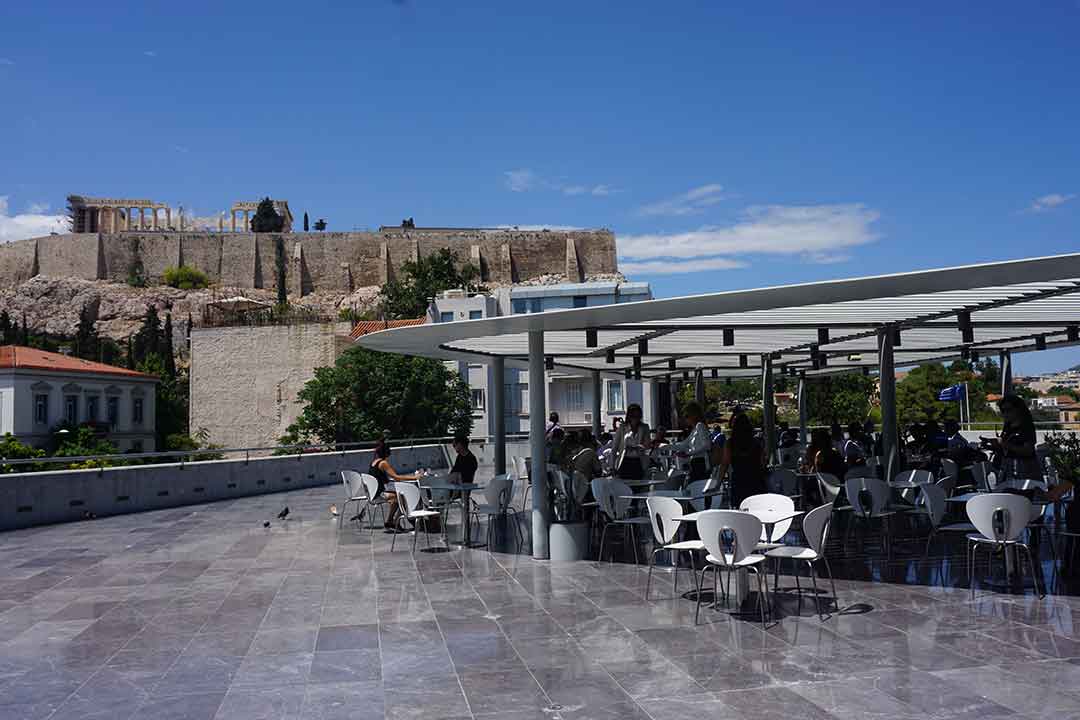
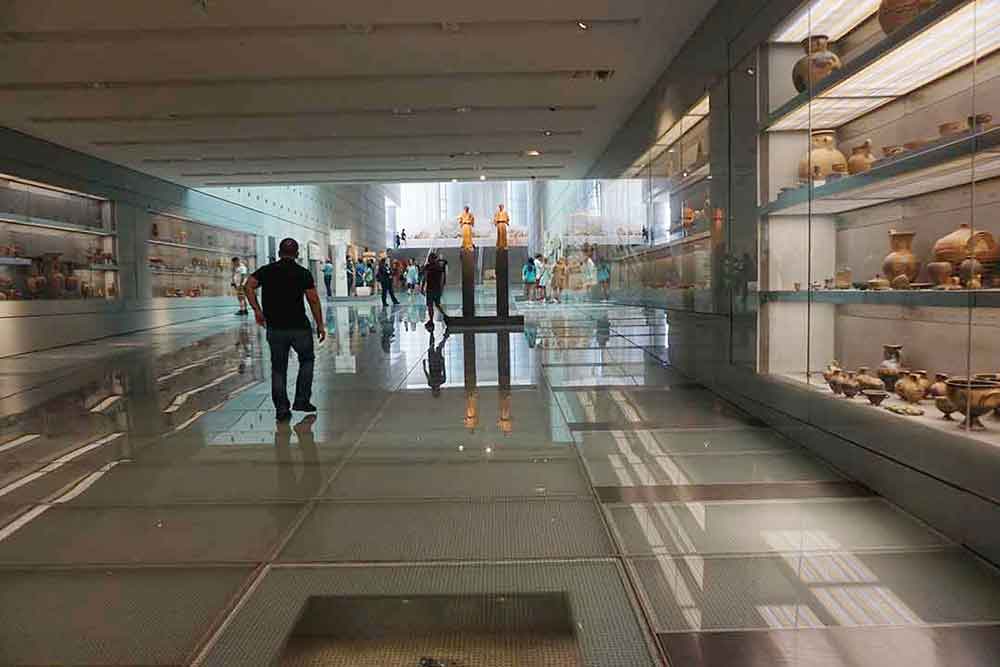
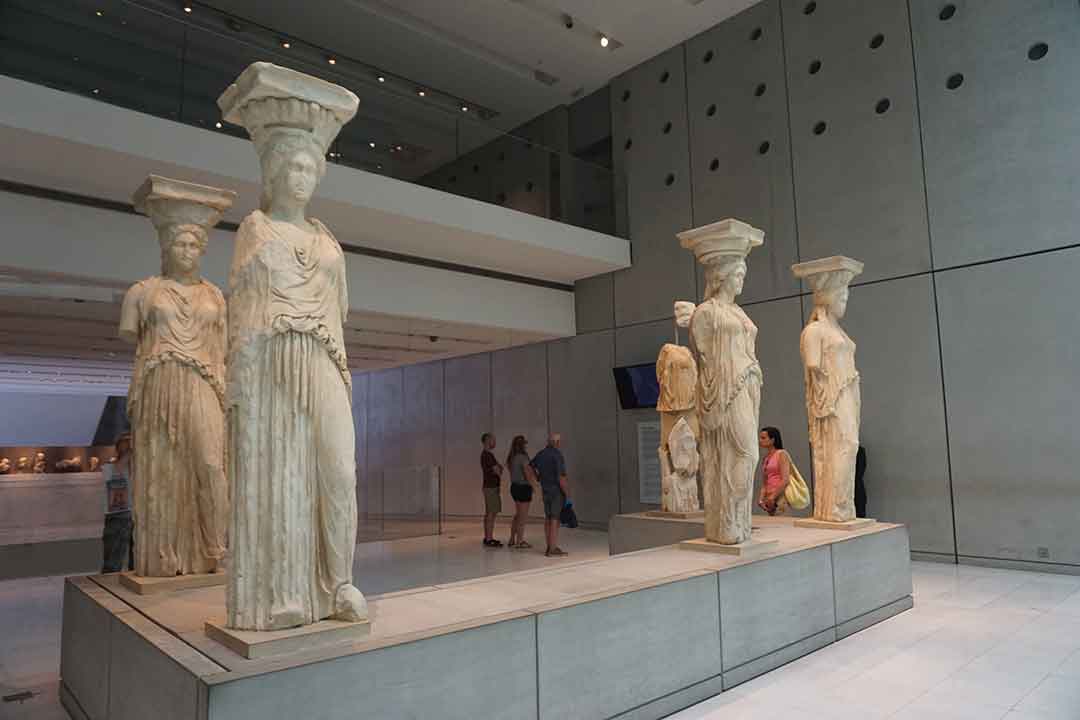
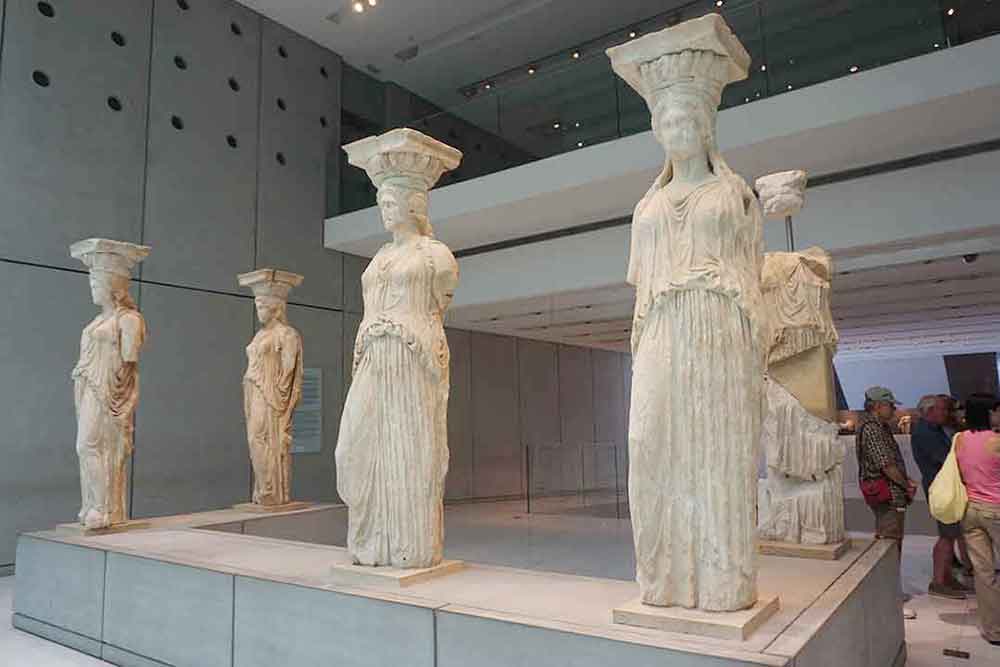
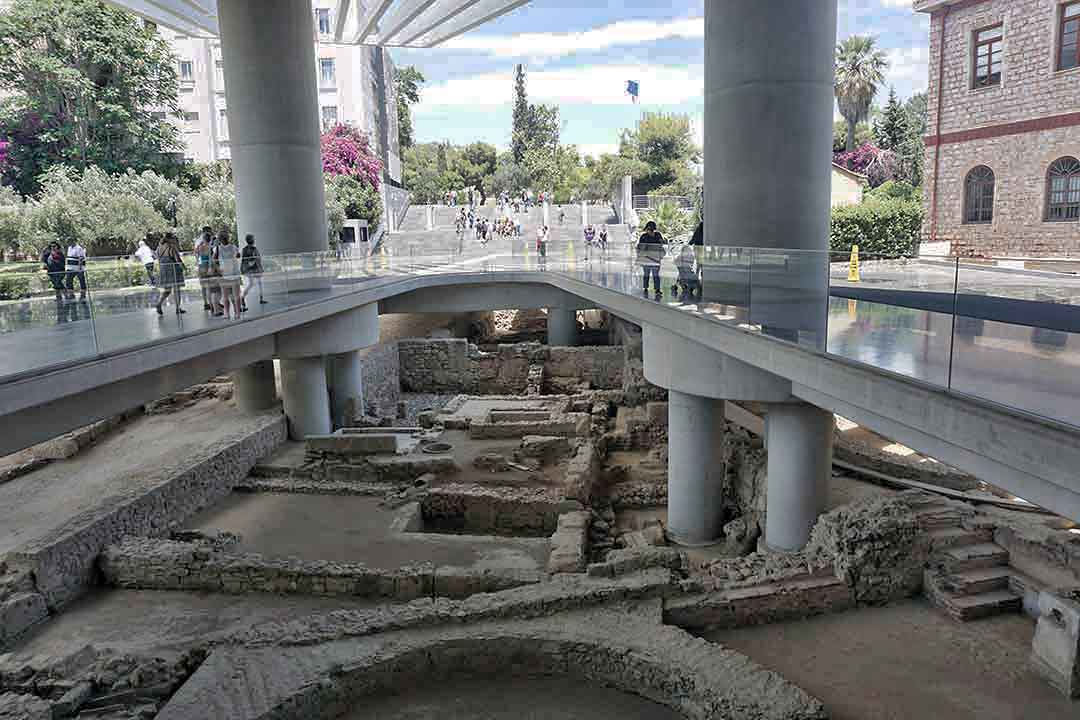
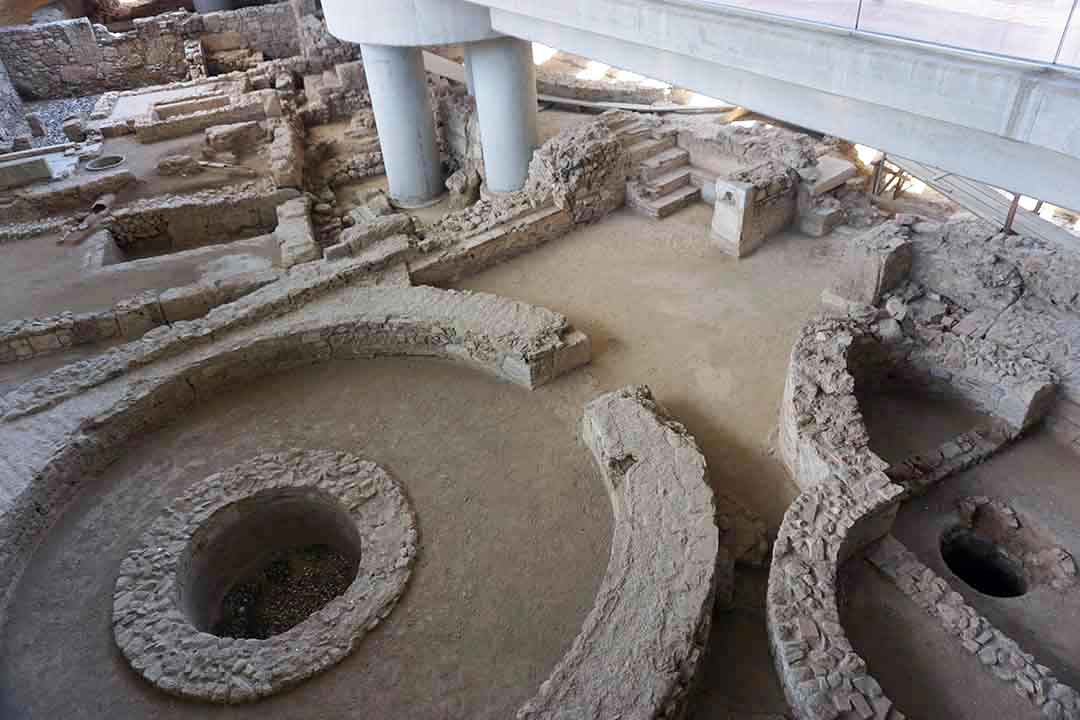
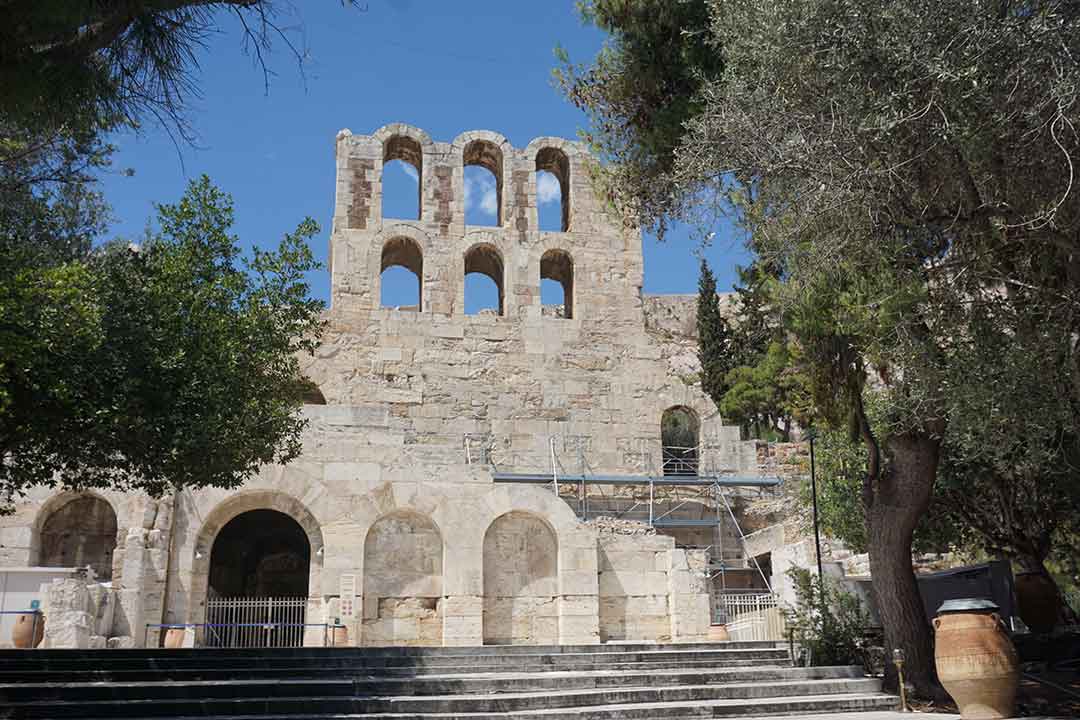
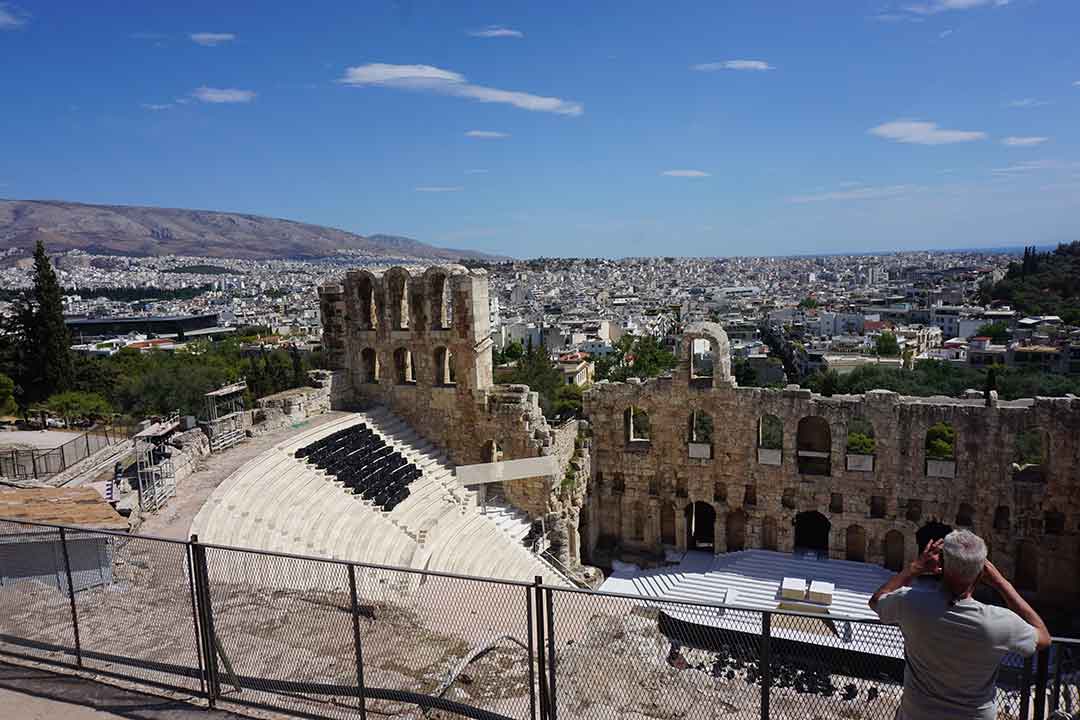
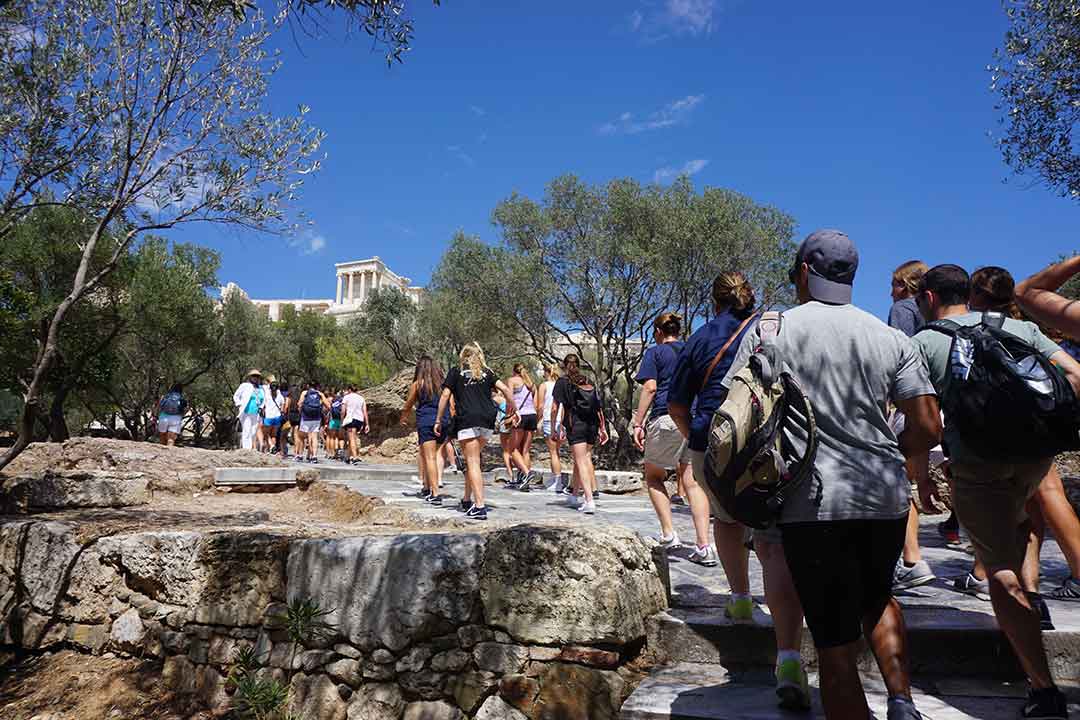
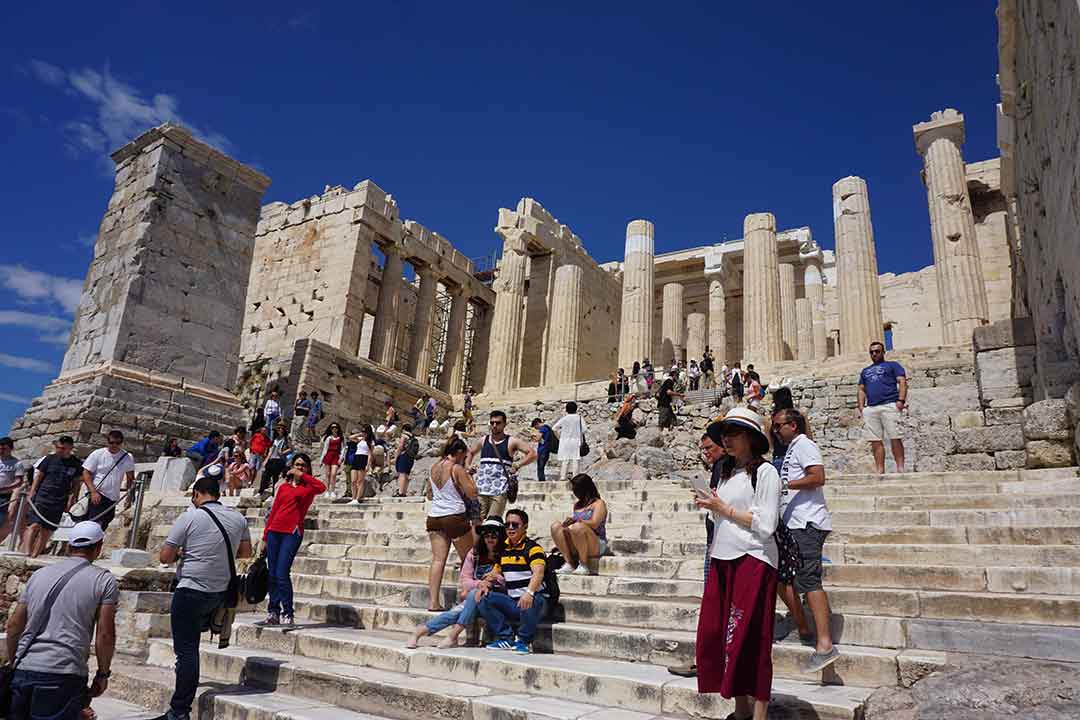
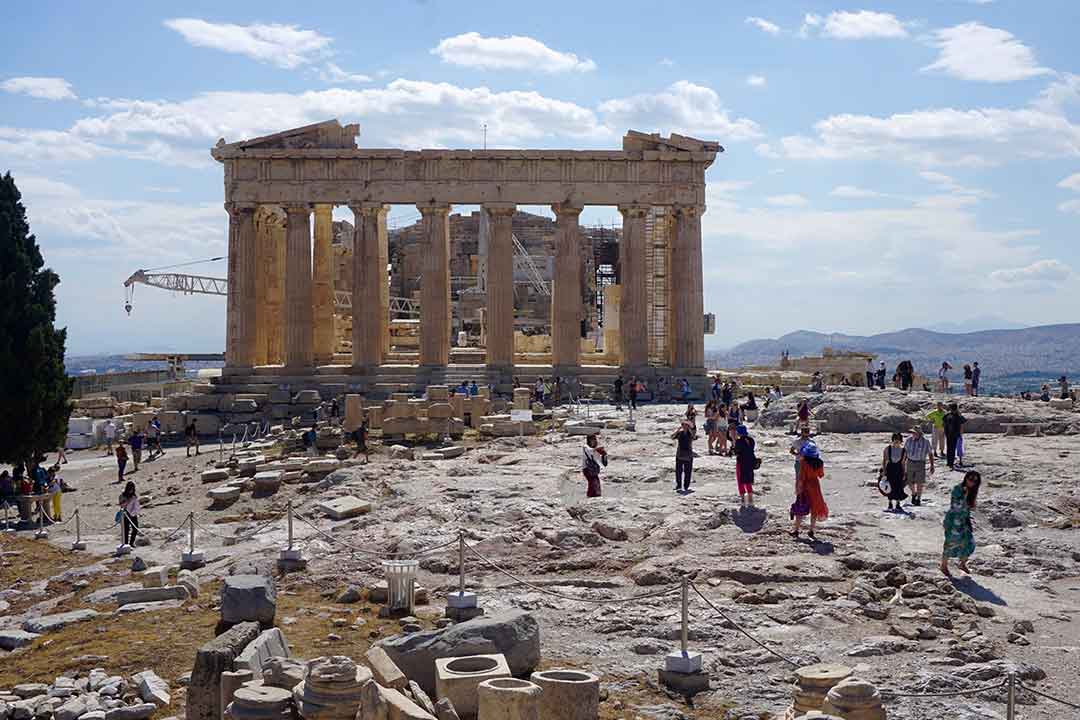
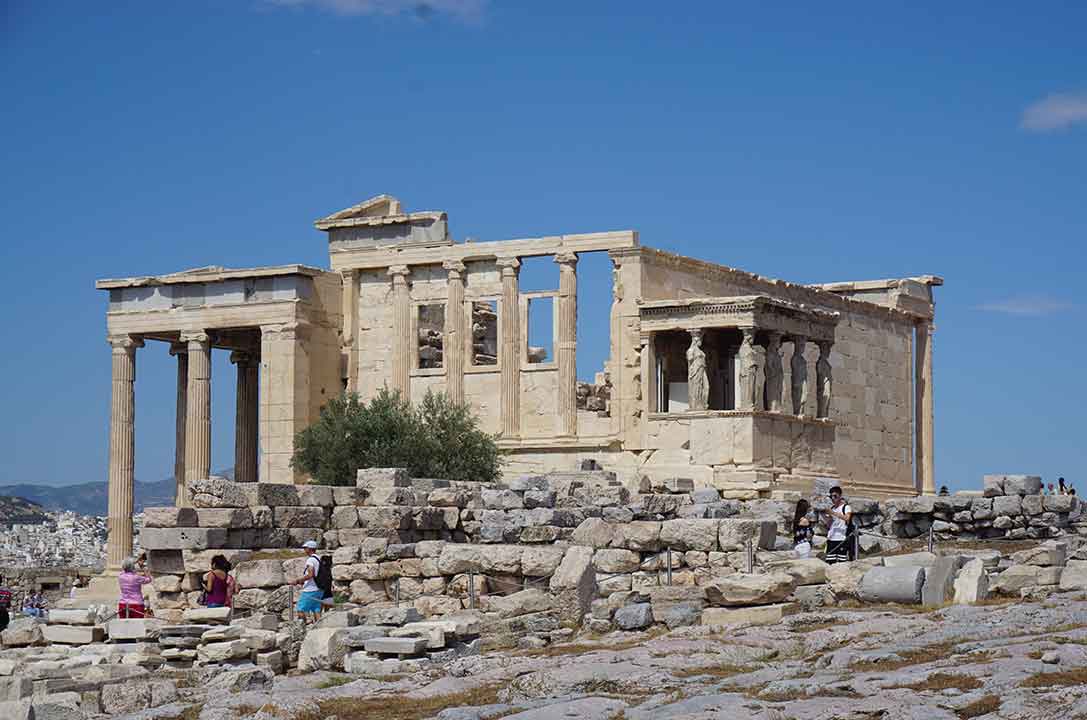
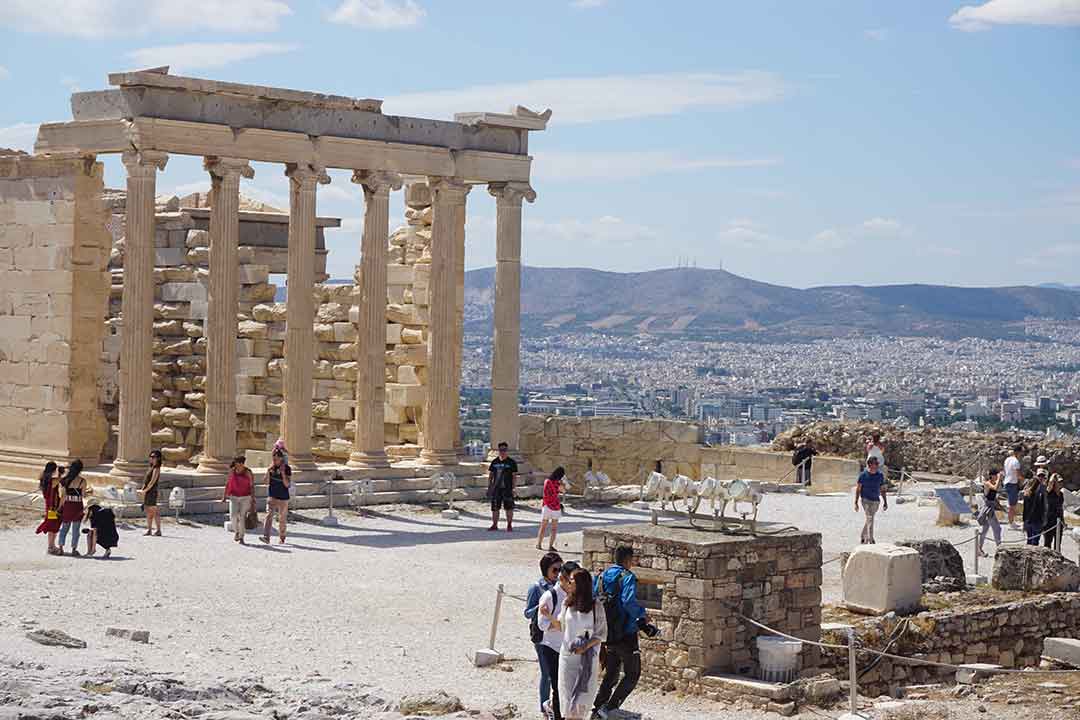
I’m really glad you enjoyed Athens. I spend a lot of the year here and too many tourists forsake it to go straight to the islands. It has a lot of hidden gems too – although of course, the Acropolis Museum is beautiful (I envy that you got photos inside: I got shouted at for taking them and my iPhone nearly confiscated!)
Thanks for sharing this.
Thanks for commenting, Bex! We spent a night before and another night after our cruise and wish we could have spared another night or two to explore Athens. Regarding interior photos at the Acropolis Museum, I was also told I couldn’t take photos in one large area and was admonished by one of the staff, who told me it was OK in other areas. I would have loved to have taken more photos, but I bought a small guidebook to remind me of all we saw. We could have spent several more hours at both the Museum and the Acropolis itself, but I am just glad we were able to see them at all, and on such a beautiful day!
Hi Debbie. Thx for the great post! It’s been 20 years since I was last in Athens, so it’s definitely time to return. I’d love to visit the new Acropolis Museum. It looks amazing!
Yes, 20 years is a long time! I’m sure you would love to revisit Athens, Doreen. It would be interesting to see how things have changed, and the new Museum is not to be missed!
We were so impressed by the new Acropolis Museum! We almost spent a whole day there! Athens is SO different from what it used to be like. Much cleaner. Much more attractive. It’s definitely worth spending a few days in Athens before or after your Greek Islands cruise, as you say :-).
Greece has been on my radar for a while now, especially the islands. I’d love to start with Athens like you did and of course, visit Acropolis. The museum seems interesting too. There is so much to see there.